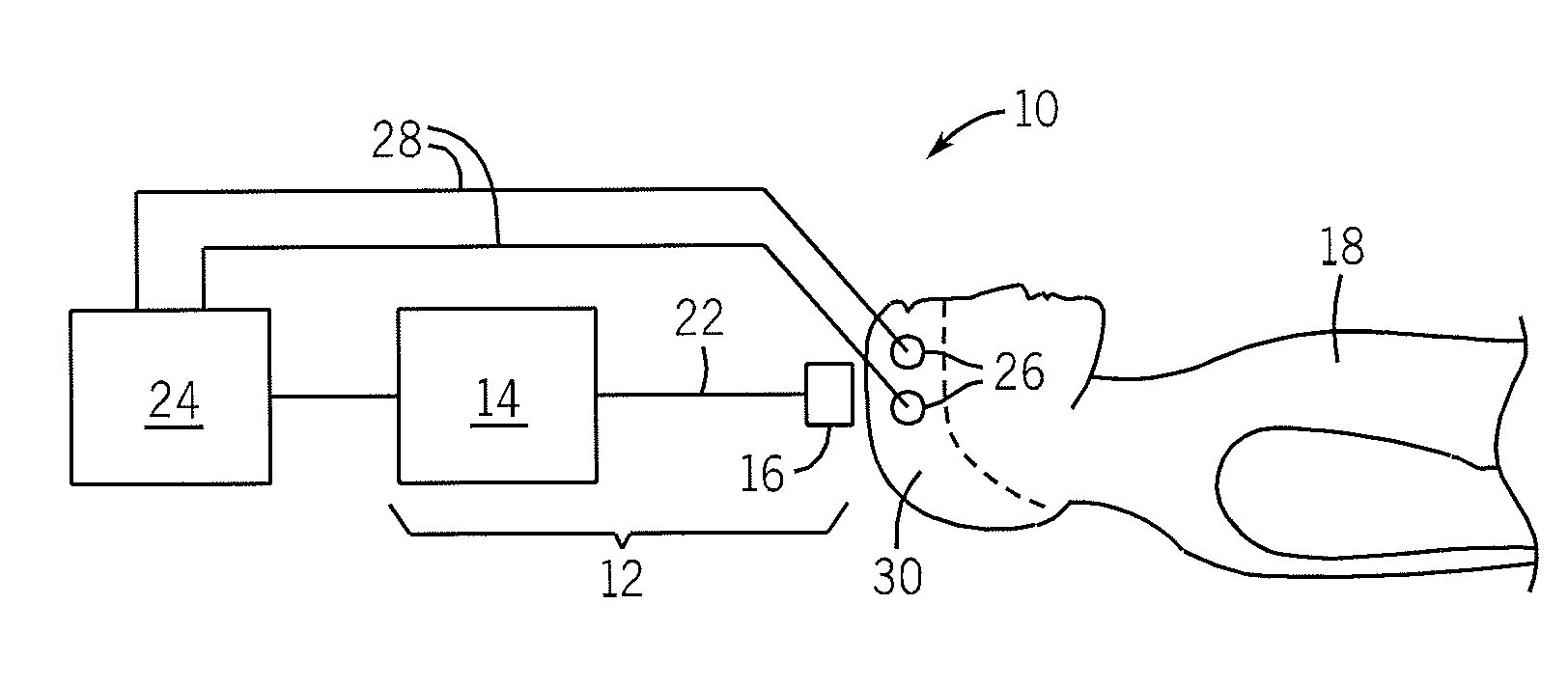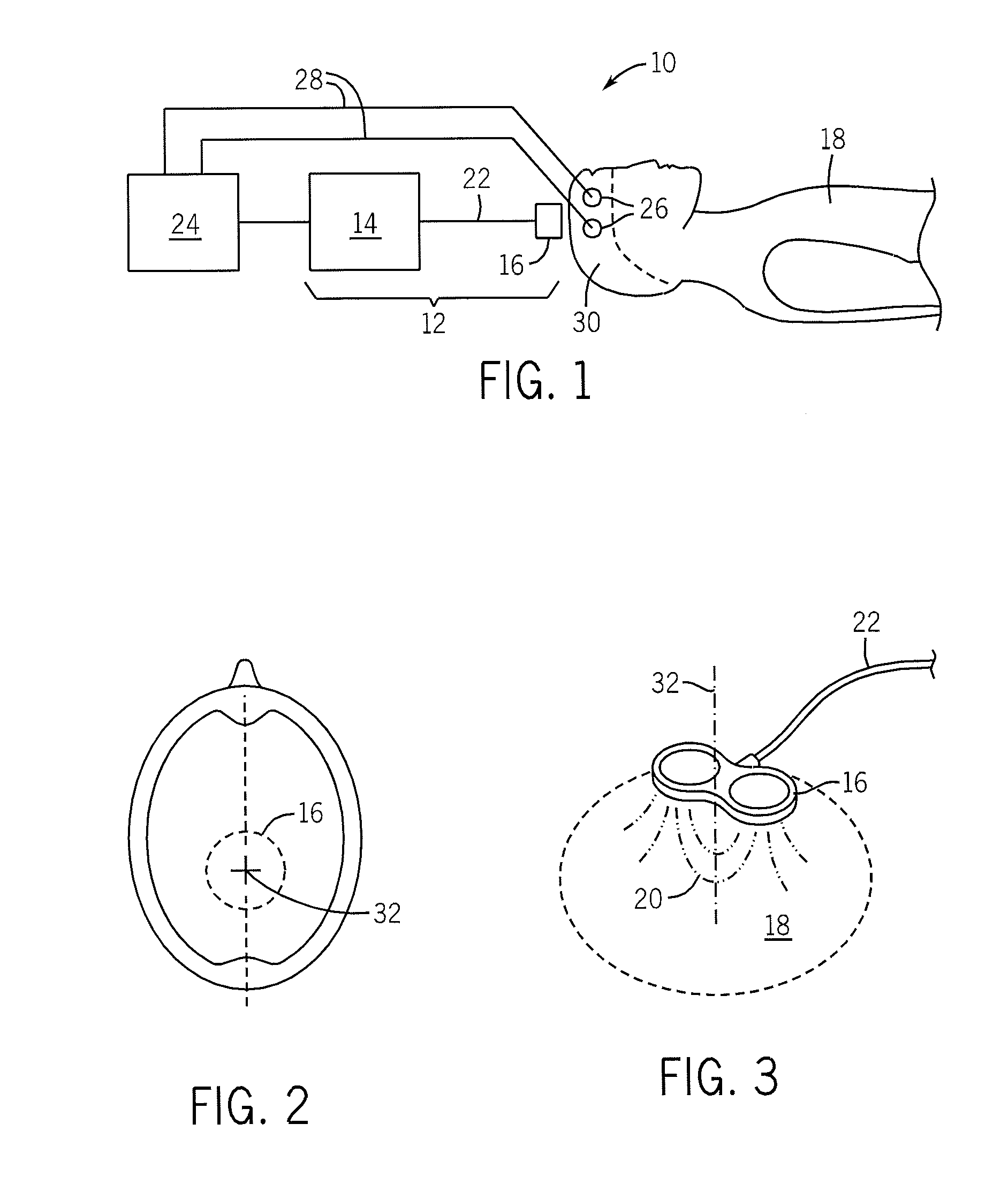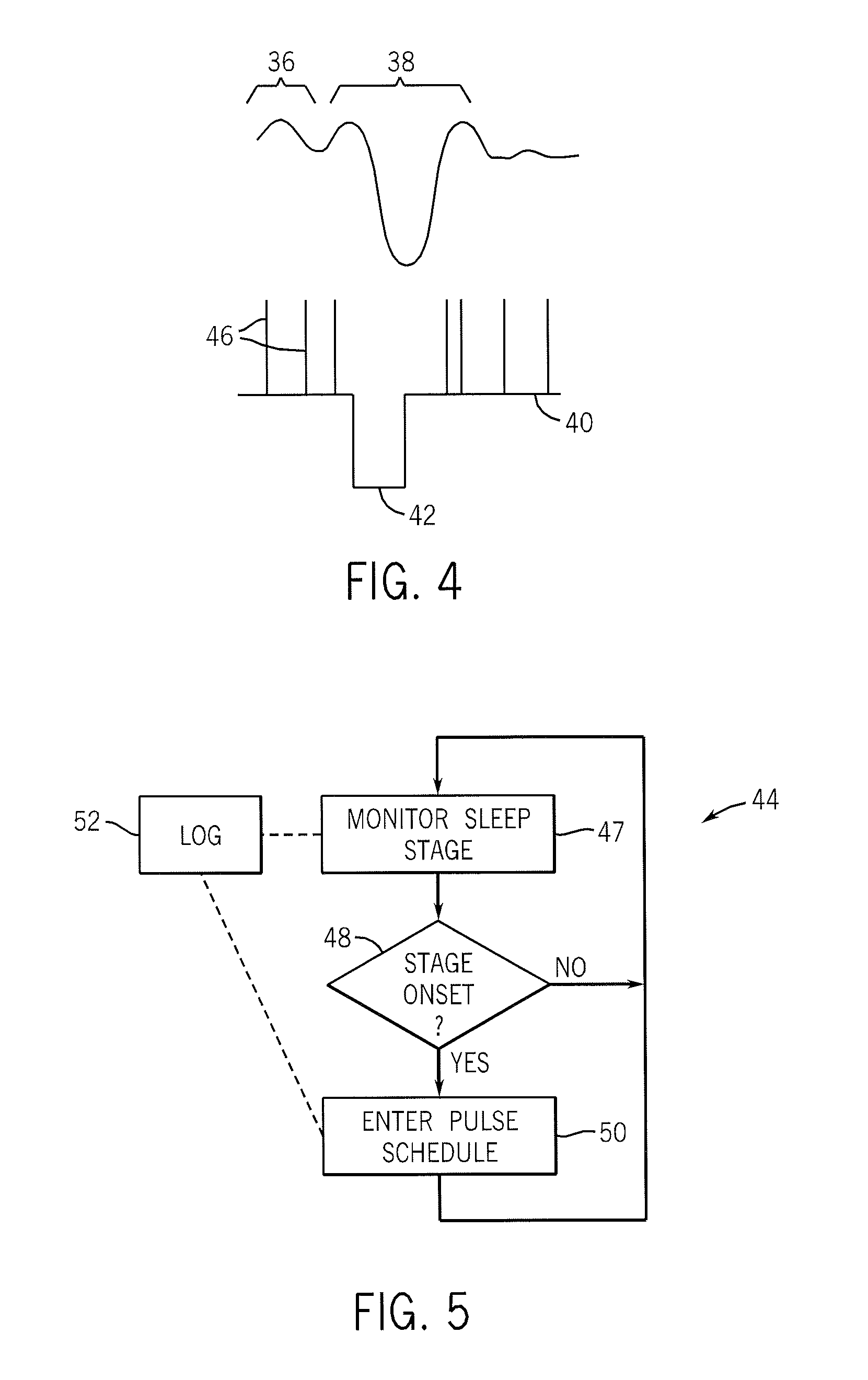Method and apparatus for promoting restorative sleep
a technology for restorative sleep and sleep, applied in the field of devices for promoting or inducing restorative sleep, can solve the problems of conventional sleeping pills, difficulty in obtaining the amount or quality of sleep they require, and the efficiency of sleep promotion techniques that do not increase the efficiency of sleep, so as to promote slow-wave activity and promote restful sleep. , the effect of promoting slow-wave activity
- Summary
- Abstract
- Description
- Claims
- Application Information
AI Technical Summary
Benefits of technology
Problems solved by technology
Method used
Image
Examples
Embodiment Construction
[0044]Referring now to FIG. 1, a first embodiment of the apparatus 10 of the present invention may use a transcranial magnetic stimulation (TMS) device 12 having a power unit 14 and a coil 16. During operation, a set of capacitors or other energy storage devices in the power unit 14 are charged and then rapidly connected to the coil 16 by leads 22 creating a monophasic or biphasic pulse of current in the coil 16 positioned at the top of the head of a resting patient 18.
[0045]Referring now to FIG. 1, the pulse of current causes a rapidly changing magnetic flux 20 in the brain of the patient 18. This changing magnetic field, in turn, induces current within the brain tissue that stimulates neuron activity. The coil 16 may, as depicted in FIG. 3, may be a “butterfly coil”, having windings in a figure-eight pattern to provide opposed magnetic flux in adjacent loops focusing the flux 20 to a compact region. Other coils such as single loop coils and the like may also be used.
[0046]TMS devi...
PUM
 Login to View More
Login to View More Abstract
Description
Claims
Application Information
 Login to View More
Login to View More - R&D
- Intellectual Property
- Life Sciences
- Materials
- Tech Scout
- Unparalleled Data Quality
- Higher Quality Content
- 60% Fewer Hallucinations
Browse by: Latest US Patents, China's latest patents, Technical Efficacy Thesaurus, Application Domain, Technology Topic, Popular Technical Reports.
© 2025 PatSnap. All rights reserved.Legal|Privacy policy|Modern Slavery Act Transparency Statement|Sitemap|About US| Contact US: help@patsnap.com



